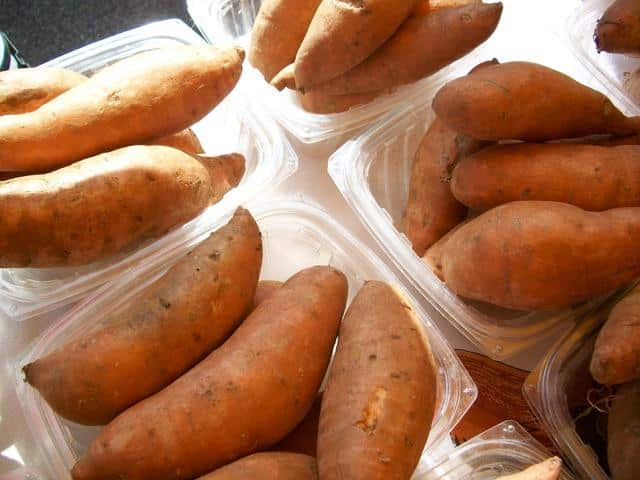If you are looking to become more self-sufficient while boosting your nutrition at the same time, there is no better choice than with a home vegetable garden.
Homegrown veggies are superior to store-bought veggies in terms of freshness, taste and nutrition. When you add in their lower cost, and the pride you feel in growing your own food, it is a no-brainer. Plus, many veggies are easy to grow and do not require large amounts of space.
It makes sense that fresh-picked vegetables taste better than store-bought veggies, but why are they more nutritious? It has to do with that freshness. Supermarket produce usually has traveled many miles over a period of a few days to even a few weeks to get to your store. That long trip from farm to table allows nutritional content to degrade, especially if the vegetables have been exposed to heat. According to nutritionists, temperature is the top factor in keeping fruits and vegetables in the best condition.
Looking For Non-GMO Seeds For Your Garden? The Best Deals Are Right Here!
1. Kale – You’ve probably read about all the health benefits of this superfood, but did you know it was easy to grow, too? It likes sunny, cool conditions of the spring and fall and soil that has a neutral to slightly alkaline pH.
Kale leaves are rich in fiber, iron, vitamins A, K and C, and new studies link kale to lowered LDL (bad cholesterol) levels. Add it to salads, soups and stews for its hearty taste and nutrition.
2. Spinach – This super healthy vegetable does well in spring, fall and even winter in some locations. Leaves will turn bitter tasting, so it is a good idea to harvest them promptly.
Spinach contains the antioxidants beta-carotene, lutein and zeaxanthin that are good for eye health and for digestion. Spinach also is high in iron, calcium and vitamins A, B and C.
3. Collard greens, turnip greens, mustard greens — You can mix these greens — which are rich in minerals, vitamins and antioxidants — or eat them separately. A Harvard University study concluded that people who regularly consume dark green, leafy vegetables are about 30 percent less likely to have a heart attack or stroke. Eating these greens may also protect against certain types of cancers, according to studies by the American Institute for Cancer Research.
These greens are hardy in the garden. They don’t need much space, and they can thrive in partial sunlight.
4. Carrots – You probably grew up hearing that eating carrots was good for your eyes. It’s true. Carrots are loaded with beta-carotene, a type of vitamin A that gives carrots their orange color and helps the retina and other parts of the eye to remain healthy. This root vegetable, which is at its most nutritious in its raw state, also is a good source of fiber, antioxidant agents, vitamins C, K and B8, folate, pantothenic acid, iron, potassium, manganese and copper. Bugs Bunny was definitely on to something!
Carrots grow best in the cool temperatures of early spring and late fall. They can do well in small spaces and do not mind a little shade.
5. Red bell pepper – High in nutrition and low in calories, red bell peppers taste great raw in salads or cooked in pasta dishes. One medium pepper can provide 150 percent of your daily requirement of vitamin C. At only 32 calories, that’s quite a boost. Red bell peppers also help combat atherosclerosis, which can lead to heart disease.
This New All-Natural Fertilizer Doubles Garden Production!
Red bells come in many different varieties. They prefer full sun and soil of at least 65 degrees that drains well. As the plants grow, you may need to stake them, depending on the size of the peppers you are growing.
6. Bok choy – One of my new go-to-favorites, bok choy (aka Chinese white cabbage) is loaded with more beta-carotene and vitamin A than any other type of cabbage. It also contains vitamins C and K, potassium, magnesium and manganese. Additionally, the Harvard School of Public Health calls bok choy a better source of calcium than dairy products.
Bok choy is low in calories – one cup contains about 20 calories – yet its high fiber content will help you feel full. You can use bok choy in place of other cabbages or eat it raw.
Bok choy requires rich, loose soil, and it will need fertilization not long after planting.
7. Sweet Potatoes – Many nutritionists place sweet potatoes first in their list of healthy veggies. They contain high amounts of vitamins B6, C and D, iron and magnesium.
Unlike other types of potatoes, sweet potatoes prefer hot weather, so they grow best in the South. If you live in a colder climate, you can have success with raised beds with covers. Either way, sweet potatoes like sandy soil and plenty of sunshine.
According to 2015 research by the National Gardening Association, 35 percent of all American households are growing food either in a home garden or in a community garden. This percentage is an overall increase of 17 percent over the last five years.
Another advantage of growing your own vegetables is that you avoid the dangers of chemicals. When you plant and care for your own garden vegetables, you know exactly what has been sprayed – or has not sprayed – on them.
What are your favorite healthy vegetables? Share your advice in the section below:
Every Spring, Gardeners Make This Avoidable Mistake — But You Don’t Have To. Read More Here.
